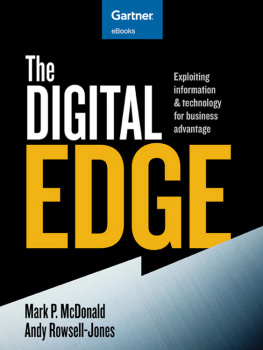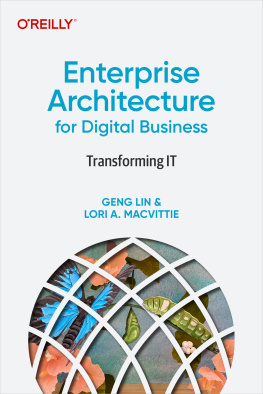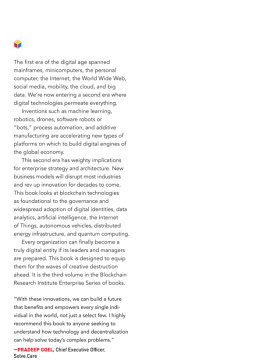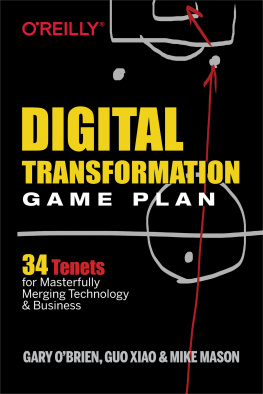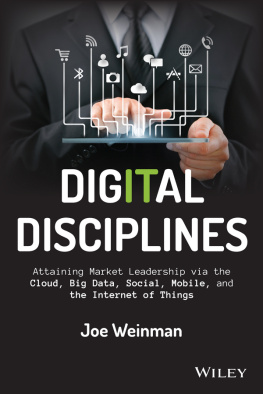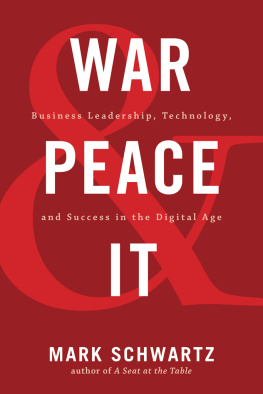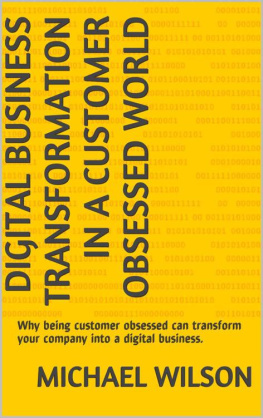Mark P. McDonald - The Digital Edge: Exploiting Information and Technology for Business Advantage
Here you can read online Mark P. McDonald - The Digital Edge: Exploiting Information and Technology for Business Advantage full text of the book (entire story) in english for free. Download pdf and epub, get meaning, cover and reviews about this ebook. year: 2012, publisher: Gartner, Inc., genre: Business. Description of the work, (preface) as well as reviews are available. Best literature library LitArk.com created for fans of good reading and offers a wide selection of genres:
Romance novel
Science fiction
Adventure
Detective
Science
History
Home and family
Prose
Art
Politics
Computer
Non-fiction
Religion
Business
Children
Humor
Choose a favorite category and find really read worthwhile books. Enjoy immersion in the world of imagination, feel the emotions of the characters or learn something new for yourself, make an fascinating discovery.
- Book:The Digital Edge: Exploiting Information and Technology for Business Advantage
- Author:
- Publisher:Gartner, Inc.
- Genre:
- Year:2012
- Rating:3 / 5
- Favourites:Add to favourites
- Your mark:
The Digital Edge: Exploiting Information and Technology for Business Advantage: summary, description and annotation
We offer to read an annotation, description, summary or preface (depends on what the author of the book "The Digital Edge: Exploiting Information and Technology for Business Advantage" wrote himself). If you haven't found the necessary information about the book — write in the comments, we will try to find it.
How can companies leverage technology for growth? By combining their digital and physical assets in new ways to create value, revenue and results.
Digital technologies dominate more than half of business operations, but only a quarter of firms attribute revenue to these assets. Why? Because most organizations focus their strategies on digital transactions, which automate and substitute physical resources for digital ones.
New, digitalized businesses have learned how to create value and revenue from digital assets. They go beyond further rounds of process automation to transform processes, business models and the customer experience by exploiting the pervasive digital connections between systems, people, places and things. Technologies such as smartphones, tablet computing, social media, big data, analytics, cloud computing, remote sensing and others provide the raw materials for any company today large or small, old or new to create a digital edge for its business.
Learn how several leading organizations have used digital technology to solve fundamental contradictions for their customers or business models that made new opportunities possible in ways hard for competitors to copy. Their experiences are distilled into an approach any organization can follow: Identify digital value, select the right combination of digital and physical resources, and build digital capabilities by listening from the outside-in and developing from the inside-out. Then create leadership teams that will make your company ready to act on new digital opportunities to create sustainable competitive advantage.
The Digital Edge addresses the connection between growth and digital technology. This is an issue facing every executive and McDonald and Rowsell-Jones provide a concise, actionable and practical approach to answer how technology supports growth.
Jeff Sampler, Fellow of Strategy and Technology at Sad Business School, University of Oxford
Mark P. McDonald: author's other books
Who wrote The Digital Edge: Exploiting Information and Technology for Business Advantage? Find out the surname, the name of the author of the book and a list of all author's works by series.

